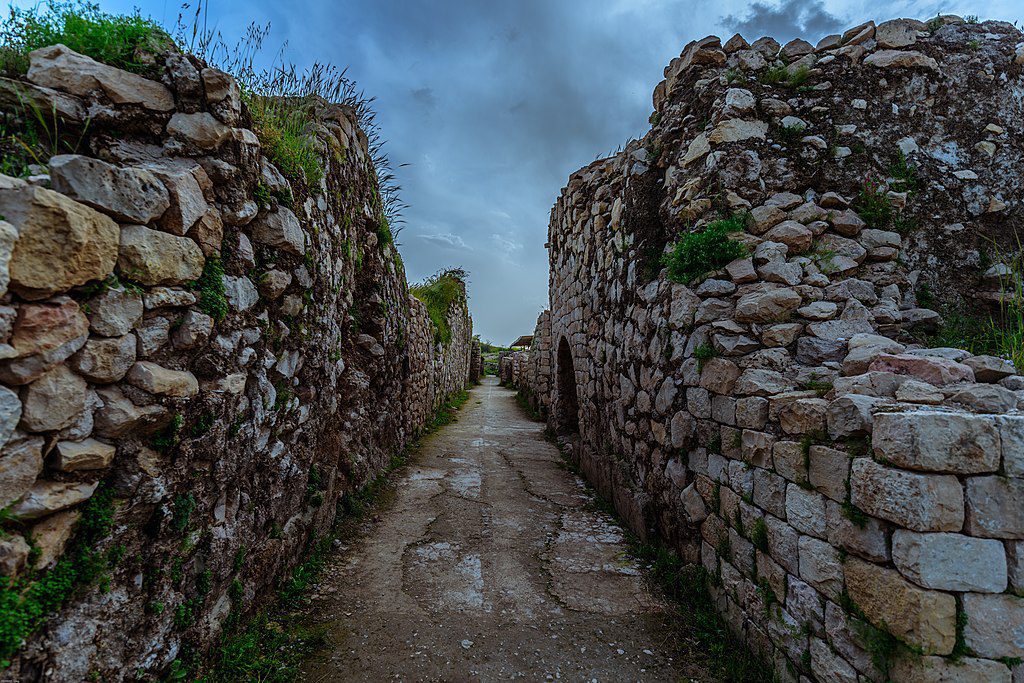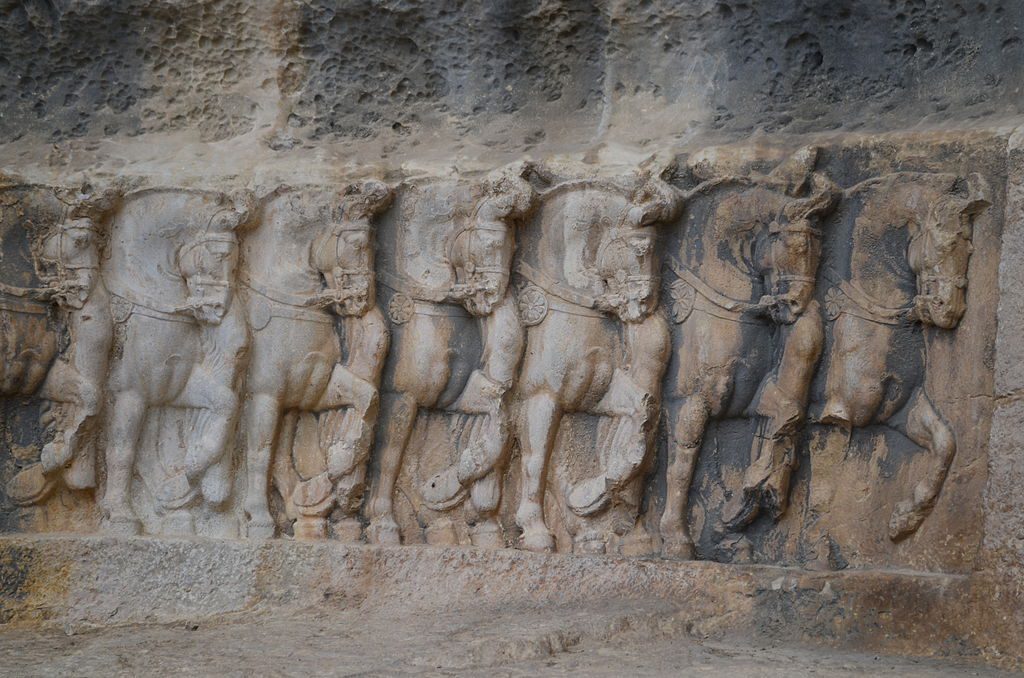Table of Contents
Welcome to the captivating world Ancient City of Bishapur, a city steeped in history and nestled in the heart of Iran. With its rich cultural heritage and breathtaking Iran archaeology, Bishapur stands as a testament to the glory of the past. In this article, we will embark on a journey through time, delving into the fascinating history, remarkable architecture, and cultural significance of this hidden gem.
Bishapur History
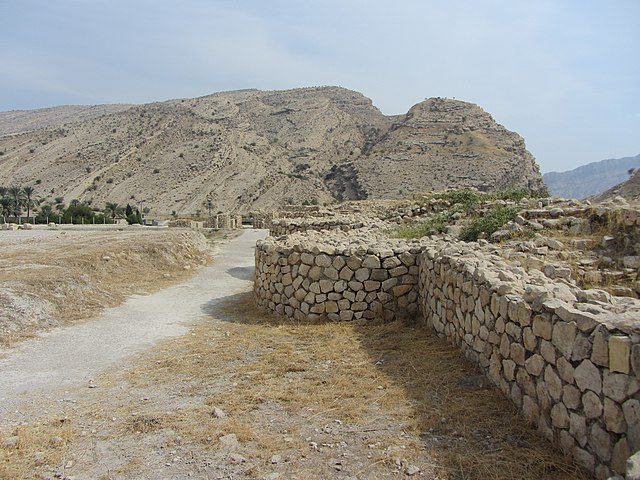
Bishapur Iran, among the Sasanian archaeological landscape of the Fars region registered in UNESCO, was founded in the 3rd century AD by the Sasanian king Shapur I. As the capital of the Persian province of Pars, it served as a strategic stronghold and played a vital role in the region’s political landscape. The city’s establishment marked the triumph of the Sasanian Empire and its emergence as a dominant power in the ancient world.
Under the Sasanian rule, the city flourished as a center of commerce, art, and learning. The empire’s influence is evident in the city’s architecture, which blends Persian, Parthian, and Roman elements. The city became a melting pot of cultures, attracting people from far and wide, and fostering a vibrant and cosmopolitan atmosphere.
Bishapur Architecture
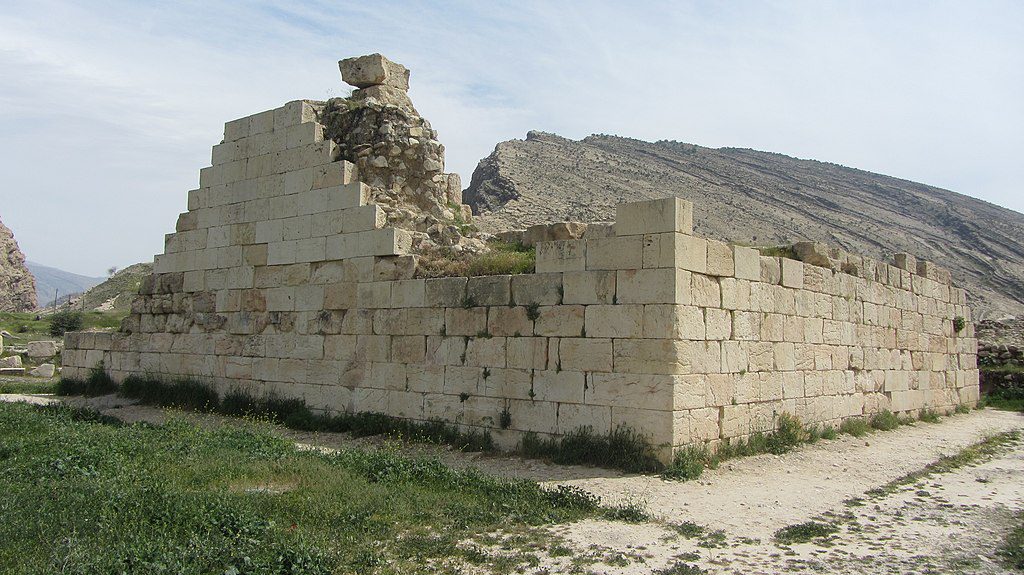
One of the remarkable aspects of Bishapur Iran is its architectural splendor. The city boasts magnificent structures, such as the Anahita Temple, dedicated to the ancient Persian goddess of fertility and water. The temple’s intricate carvings and grandeur reflect the mastery of Sasanian craftsmanship. Another architectural marvel is the Tange Chogan rock relief, a monumental carving depicting scenes of royal hunting and victory. Additionally, the Shapour Palace, with its majestic halls and royal chambers, stands as a testament to the grandeur of the Sasanian dynasty.
Bishapur Geographical Location
Situated in southwestern Iran, Bishapur occupies a strategic position at the crossroads of ancient trade routes. It lies in the Zagros Mountains, nestled between fertile valleys and overlooking the Shapur River. The city’s location not only contributed to its economic prosperity but also bestowed it with a breathtaking natural backdrop.
Beyond the city’s architectural wonders, this city is blessed with stunning natural landscapes. The picturesque Zagros Mountains envelop the city, offering panoramic vistas and opportunities for adventurous hikes. The Shapur River, meandering through the valleys, adds to the scenic charm of the region. Exploring the natural beauty surrounding the city is a delightful experience that complements the historical journey.
Findings in Bishapur
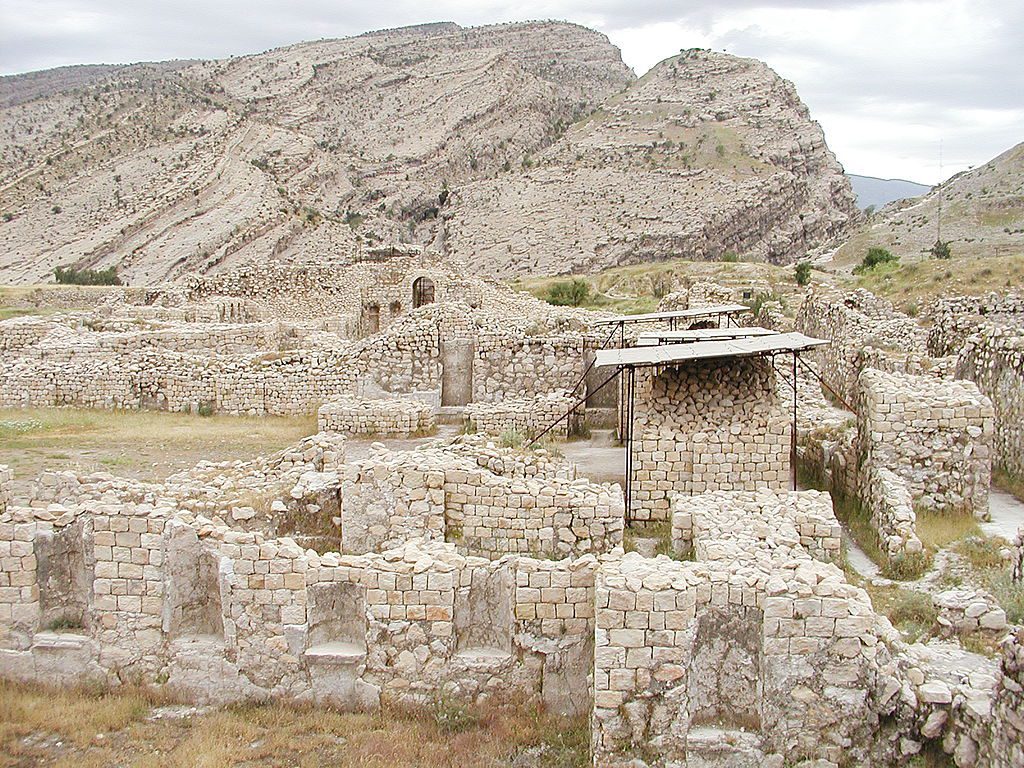
Over the years, numerous archaeological excavations have taken place in Bishapur, unearthing valuable artifacts and shedding light on its ancient past. Archaeologists have discovered intricate mosaics, pottery, statues, and coins, providing insights into the daily life, religious practices, and artistic achievements of the city’s inhabitants. These findings have contributed significantly to our understanding of the Sasanian Empire and its cultural legacy.
The ongoing excavations in this city are crucial for preserving and interpreting the city’s history. They allow researchers to piece together the puzzle of the past and unravel the mysteries that lie beneath the surface. By studying the artifacts and structures, experts can reconstruct the city’s layout, decipher its social structure, and gain a deeper understanding of the Sasanian civilization.
Bishapur Cultural Significance
During its heyday, Bishapur Iran was not only a political and economic hub but also a vibrant center of art and culture. The city attracted renowned artists, poets, and scholars, fostering a creative and intellectual environment. The city became a melting pot of ideas, where different cultures converged, influencing and enriching one another. The legacy of this cultural exchange can still be felt in the art, literature, and traditions of the region.
The influence of Bishapur extended far beyond its immediate surroundings. The city’s architectural styles, artistic techniques, and cultural practices spread throughout the Sasanian Empire and beyond. The city became a beacon of innovation and creativity, leaving a lasting impact on the art, architecture, and cultural heritage of the ancient world. Its legacy continues to inspire and captivate both scholars and enthusiasts today.
Life in Bishapur
To truly understand the essence of Bishapur, it is essential to explore the daily life of its residents. The city bustled with activity as people engaged in various occupations such as farming, trade, and craftsmanship. The markets thrived with merchants selling goods from near and far, while artisans honed their skills, creating beautiful artifacts that showcased the city’s artistic prowess. Life in this city was a tapestry of traditions, social interactions, and economic endeavors.
The social structure of the city was hierarchical, with the ruling elite occupying the top echelons of society. The Sasanian kings and nobles wielded power and influence, while the common people toiled to sustain their livelihoods. The city had its administrative system, with officials overseeing various aspects of governance. Religion played a significant role in daily life, with temples and religious ceremonies serving as important cultural and spiritual anchors.
Bishapur in Modern Times
Preservation Efforts and Tourism
In recent years, concerted efforts have been made to preserve and protect this ancient city. Conservation projects have been undertaken to safeguard its architectural treasures and ensure that future generations can experience its grandeur. The city has also become a popular tourist destination, attracting visitors from around the world who are eager to explore its rich history and immerse themselves in its cultural heritage.
Current State of the Ancient City
While the passage of time has taken, significant remnants of the past glory still stand tall. The ancient city showcases a blend of well-preserved structures and partially ruined remnants, allowing visitors to witness the grandeur that once defined this remarkable place. As you wander through the streets and courtyards, you can’t help but be awe-struck by the sheer magnitude of the architectural achievements and the stories they hold.
Bishapur in Art and Literature
Bishapur’s allure and significance have not been limited to its physical existence. The city has found its way into the art and literature of various periods. From intricate paintings to detailed sculptures, artists have captured the essence of Bishapur and immortalized it in their works. These artistic depictions serve as a testament to the enduring fascination that this ancient city continues to evoke.
Bishapur’s rich history and captivating atmosphere have inspired writers and poets throughout the ages. Its tales of triumph, legends of heroic figures, and the vibrant tapestry of daily life have been woven into the fabric of literature. From ancient epics to contemporary novels, the city has left an indelible mark on the literary landscape.
Bishapur and the Silk Road
Bishapur’s strategic location on the ancient Silk Road trade route played a pivotal role in its prosperity. The city served as a vital hub for merchants and traders, facilitating the exchange of goods, ideas, and cultures between the East and the West. The bustling markets of this city buzzed with activity as caravans laden with precious silks, spices, and other commodities passed through its gates.
The thriving trade and commerce in the city fueled its economic growth and prosperity. The city became a melting pot of cultures and a vibrant center for economic activities. The exchange of goods and ideas not only enriched the local population but also contributed to the development of the region as a whole. Bishapur’s economic significance on the Silk Road cannot be overstated.
Bishapur in Mythology and Legends
Like many ancient cities, Bishapur Iran is steeped in mythology and legends. Stories of mythical creatures, heroic deeds, and divine interventions have been woven around the city’s history. These tales add a layer of mystique and wonder to this city, capturing the imagination of those who delve into its ancient past.
The city has been the backdrop for the legendary feats of heroic figures whose tales have transcended time. The bravery, valor, and triumphs of these legendary individuals have become an integral part of Bishapur’s cultural heritage. Exploring the city’s landmarks and imagining the deeds of these mythical heroes adds a sense of adventure and enchantment to the visitor’s experience.
Archaeological Sites of Bishapur
The Anahita Temple
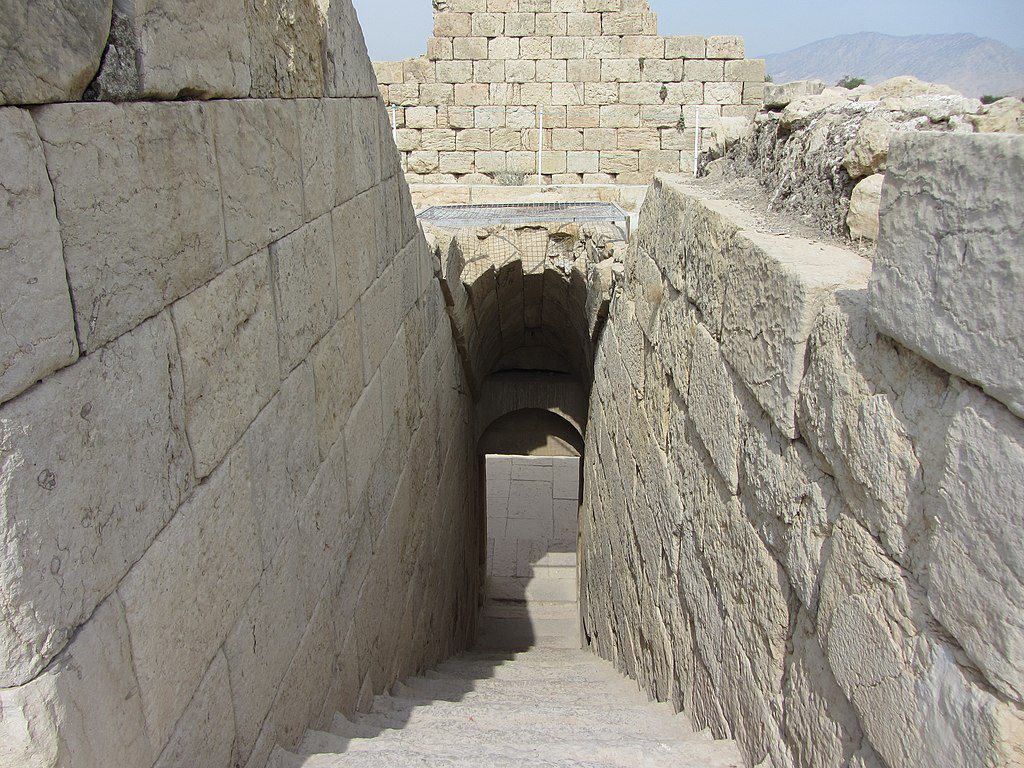
One of the most iconic structures in Bishapur is the Anahita Temple. Dedicated to the goddess of fertility and water, the temple stands as a testament to the religious devotion of the Sasanian people. Its grand architecture and intricate carvings depict scenes of ancient mythology, offering a glimpse into the spiritual beliefs of the time. Visitors can marvel at the elaborate craftsmanship and immerse themselves in the ambiance of ancient worship.
The Tange Chogan Rock Relief
Another noteworthy attraction in Bishapur is the Tange Chogan rock relief. This monumental carving portrays scenes of royal hunting and victory, showcasing the power and might of the Sasanian kings. The detailed artwork captures the essence of ancient Persian culture and provides a fascinating insight into the lives of the ruling elite. Visitors can admire the skillful craftsmanship and ponder the stories that these ancient stone engravings tell.
The Shapour Palace
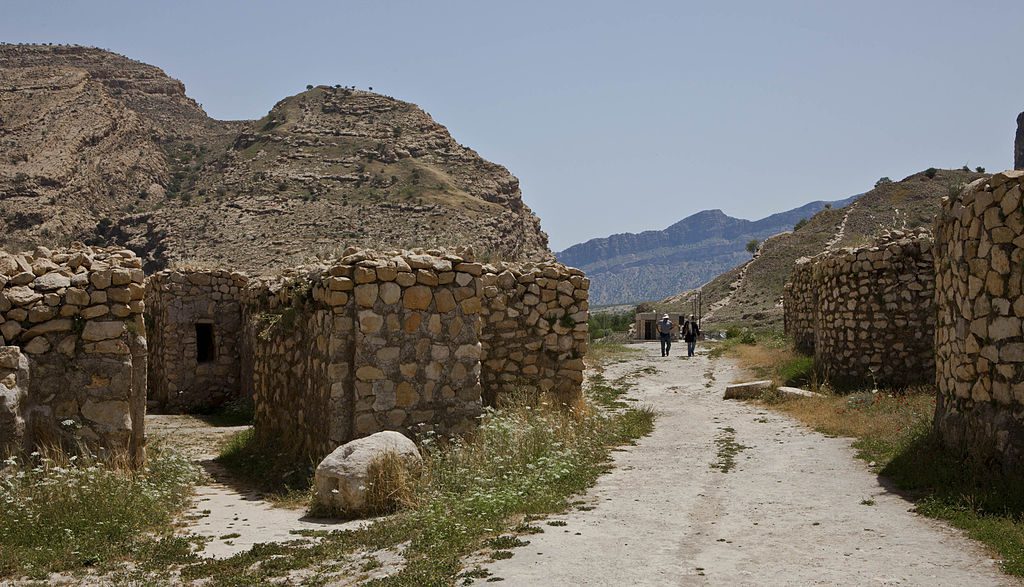
No visit to Bishapur would be complete without exploring the majestic Shapour Palace. This sprawling complex served as the royal residence of the Sasanian kings and exemplifies their architectural prowess. The palace features grand halls, intricately decorated chambers, and ornate courtyards, all of which reflect the opulence and luxury of the Sasanian dynasty. Walking through the palace, visitors can imagine the splendor of the past and appreciate the skill and vision of the ancient architects.
FAQs about Bishapur
Q1: What is the historical significance of Bishapur?
A1: Bishapur holds great historical significance as the capital of the Persian province of Pars during the Sasanian Empire. It was a thriving center of commerce, art, and culture, leaving behind a remarkable architectural legacy.
Q2: What are the must-visit attractions in Bishapur?
A2: Some of the must-visit attractions in Bishapur include the Anahita Temple, Tange Chogan Rock Relief, and the Shapour Palace. These architectural marvels offer insights into the grandeur of the Sasanian dynasty.
Q3: Where is Bishapur located?
A3: Bishapur is situated in southwestern Iran, nestled in the Zagros Mountains and overlooking the Shapur River. Its strategic location made it an important hub on the ancient Silk Road trade route.
Q4: Are there any ongoing archaeological excavations in Bishapur?
A4: Yes, ongoing archaeological excavations in Bishapur continue to reveal valuable artifacts and provide further understanding of the city’s history and cultural significance.
Q5: Can I witness any traditional festivals or events in Bishapur?
A5: Bishapur hosts traditional festivals and events throughout the year, offering visitors a chance to experience the region’s rich cultural heritage through music, dance, and traditional rituals.
Q6: Is Bishapur easily accessible for tourists?
A6: Yes, Bishapur is accessible for tourists, with transportation options available from nearby cities. Local guides and tour operators can assist visitors in exploring the ancient city and its surroundings.
Q7: Can I hike or explore the natural landscapes around Bishapur?
A7: Yes, Bishapur is surrounded by picturesque natural landscapes, including the Zagros Mountains and the Shapur River. Visitors can embark on hikes, nature walks, or simply enjoy the scenic beauty of the region.
Q8: Are there accommodations available in Bishapur for overnight stays?
A8: While Bishapur may not have a wide range of accommodation options within the city itself, there are lodging facilities available in nearby towns and cities that offer convenient access to Bishapur. These accommodations range from cozy guesthouses and traditional boutique hotels to modern establishments, ensuring a comfortable stay for visitors exploring the ancient city.
Q9: Is it possible to visit Bishapur as a day trip from nearby cities?
A9: Yes, Bishapur can be visited as a day trip from nearby cities such as Shiraz or Ahvaz. It is recommended to plan your visit in advance, allowing sufficient time to explore the archaeological sites and immerse yourself in the historical and cultural ambiance of the city.
Q10: Is Bishapur suitable for family visits?
A10: Bishapur can be a fascinating destination for family visits, providing a unique educational and cultural experience for all members. Children can learn about ancient history, explore archaeological sites, and appreciate the architectural wonders of the city.
Q11: Are there any local guides available in Bishapur?
A11: Local guides are available in Bishapur to provide insights into the history, culture, and significance of the city. They can enhance your visit by sharing interesting anecdotes, guiding you through the archaeological sites, and helping you navigate the city’s attractions.
Q12: What is the best time to visit Bishapur?
A12: The best time to visit Bishapur is during the spring (March to May) and autumn (September to November) seasons when the weather is mild and pleasant. Summer months can be hot, so it is advisable to plan accordingly and carry water and sun protection.
Q13: Is photography allowed in Bishapur?
A13: Yes, photography is generally allowed in Bishapur. However, it is always best to respect any specific guidelines or restrictions that may be in place to preserve historical sites and artifacts.
Q14: Are there any souvenir shops in Bishapur?
A14: While Bishapur itself may not have dedicated souvenir shops, nearby towns, and cities offer a variety of options for purchasing traditional crafts, handmade items, and locally produced goods that can serve as memorable souvenirs of your visit to the region.
Last Words: Explore the Best of Bishapur with a Customized Tour
The ancient city of Bishapur is a place filled with history and is located in the heart of Iran. This city is known for its rich cultural heritage and stunning archaeological sites, which remind us of the greatness of the past.
If you’re planning a trip to Iran to discover the beauty of Bishapur, consider going on a customized tour. That’s where To Iran Tour comes in. At ToIranTour, we’re dedicated to providing excellent service and insider tips to make your trip unforgettable.
Let us guide you as you embark on an amazing adventure through Iran, starting with the wonders of Bishapur. Come experience Iran with ToIranTour by your side.

